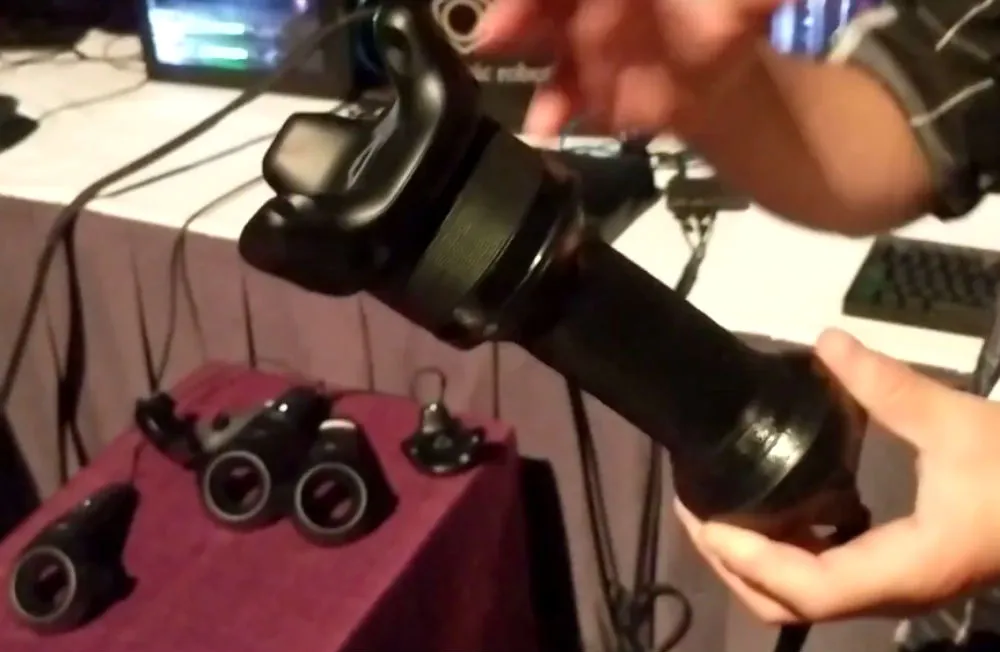A new controller shown at SIGGRAPH could change shape from rigid to squishy in a demonstration that could lead to more immersive touch sensations in virtual worlds.
The research from Cornell University’s Organic Robotics Lab builds on an earlier demonstration that pumped air into a Vive controller for a variety of sensations, including firing a gun and a liquid passing through the grip of the controller.
This new demonstration used a Vive Tracker, leaving the entirety of the base of the handheld device as a playground for haptic innovation. The overall project is only six months old and Vive Trackers only started shipping to developers in recent months, so there is a lot that still might be possible with this approach which works by pumping air into the device to change its shape.
The project is a collaboration between NVIDIA and Cornell, with PhD canidates Ben Mac Murray and Bryan Peele working on it. NVIDIA’s VR Funhouse software was used to demonstrate a pair of virtual swords. One sword was flimsy and unable to pop balloons while the other was firm and sharp and able to pop them with ease. The controller changed its rigidity based on the amount of air pumped into it, simulating a rough approximation of each sword. It is a relatively simple demonstration, but Peele said he thinks the research can be taken much further very quickly, using sensors and actuators to react to different people and how hard they are gripping the controller.
“You can now match whatever object you have in a game to whatever that visual representation is — be it a sword or a gun — can actually become that object in your hand,” said Peele. “Rather than having the same diameter and the same rigidity for every object in the game, our controller can actually morph and change shape, change stiffness. So a sponge feels different than a rock and a rope feels different than a sword.”
One major problem to overcome with this approach is that each controller prototype was tethered. Peele said they are considering a variety of options to make it more portable. It could be that this type of technology might have potential in a VR arcade setting where people wear backpack PCs with large batteries to provide the large amounts of power needed to make it work.
“Energy requirements are a technical challenge, but we are currently developing a portable system that wouldn’t need to be tethered to the computer,” Peele wrote in an email.





























